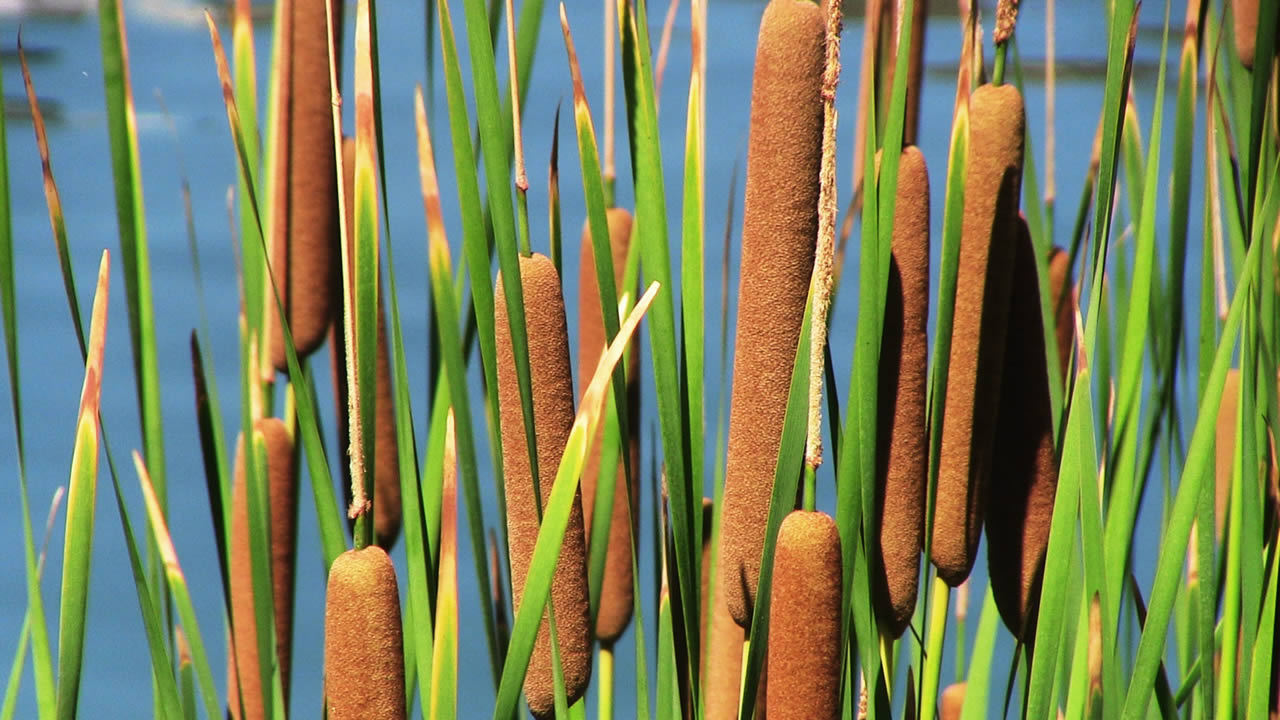
Cattails are fascinating plants that are often found by the water’s edge. They are recognized for their unique appearance, with tall, slender stalks topped by distinctive cylindrical flower spikes. You might think you know all there is to know about these ubiquitous plants, but there are actually many surprising facts that make cattails even more interesting. From their varied uses in different cultures to their ability to purify water, cattails truly stand out in the plant kingdom. In this article, we will delve into 12 surprising facts about cattails that will surely leave you with a newfound appreciation for these resilient and resourceful plants. Let’s dive in and discover the hidden world of cattails!
Key Takeaways:
- Cattail is a versatile plant that can be used for weaving, food, medicine, and even bioenergy. Its adaptability and resilience make it a symbol of strength in challenging environments.
- Cattail plays a crucial role in the ecosystem, providing habitat for wildlife, stabilizing soil, purifying water, and potentially serving as a renewable source of bioenergy. Its global distribution showcases its remarkable adaptability.
The Incredible Adaptability of Cattail
Cattail, scientifically known as Typha, is a remarkable species of plants found in wetland areas around the world. Renowned for its unique adaptability, cattail can thrive in various conditions, including marshes, swamps, and even roadside ditches. Its ability to grow in both freshwater and brackish water environments is truly remarkable.
The Versatile Uses of Cattail
Did you know that cattail has numerous practical uses? Throughout history, various cultures have utilized different parts of the plant for various purposes. The leaves and stems can be woven into mats, baskets, and even hats. The fluffy seed heads, also known as “cattail down,” have been used as stuffing for pillows and mattresses. Additionally, the plant’s roots can be dried and used as a source of fire tinder.
Edible Delights of Cattail
Not only is cattail versatile in its uses, but it is also an edible plant. The young shoots of cattail can be harvested and consumed as a nutritious vegetable. The plant’s roots contain mainly carbohydrates and can be ground into a starchy flour, suitable for baking. These edible properties have made cattail a valuable survival food for many years.
The Fascinating Pollination Process
Cattail has a unique pollination method that is worth mentioning. The male flowers, known as catkins, release a yellowish pollen, which is then dispersed by the wind. In contrast, the female flowers are densely packed and located just above the male flowers. This close proximity enables efficient pollination, ensuring the continued propagation of the species.
A Home for Wildlife
The dense stands of cattail provide an ideal habitat for various species of wildlife. Birds, such as red-winged blackbirds and yellow-headed blackbirds, often nest among the towering cattails. These plants also offer protection and food sources for numerous aquatic creatures, including frogs, turtles, and insects.
The Medicinal Properties of Cattail
Cattail has a history of being used in traditional medicine. The plant contains tannins, which have astringent properties useful in treating various skin conditions, such as burns and rashes. Additionally, the root fibers have been used to make poultices for wound healing.
An Indicator of Water Quality
Cattail serves as an indicator of water quality. It thrives in nutrient-rich standing water and is often found in environments with high levels of phosphates and nitrates. If the cattail population significantly decreases in an area, it could signal a decline in water quality and an imbalance in the ecosystem.
An Effective Soil Stabilizer
The extensive root system of cattail plays a significant role in stabilizing soil and preventing erosion. The dense network of roots helps bind the soil particles together, reducing the risk of erosion caused by water or wind. This characteristic makes cattail an ideal choice for wetland restoration projects.
A Symbol of Resilience
Cattail is often regarded as a symbol of resilience. Despite its delicate appearance, the plant is incredibly hardy and can withstand adverse conditions such as flooding and drought. The ability of cattail to bounce back and thrive in challenging environments is truly inspiring.
The Role of Cattail in Purifying Water
Cattail plays a vital role in water purification. It has the ability to absorb and remove excess nutrients, such as nitrogen and phosphorus, from the water. This natural mechanism helps improve water quality and reduce the negative impacts of nutrient pollution on aquatic ecosystems.
A Natural Source of Bioenergy
Cattail has recently gained attention as a potential source of bioenergy. The plant can be harvested and processed into a biofuel known as “cattail ethanol.” This renewable energy source has shown promise in reducing greenhouse gas emissions and providing a sustainable alternative to fossil fuels.
The Global Distribution of Cattail
Cattail is not limited to a specific region or continent. It is a globally distributed plant species and can be found on every continent except Antarctica. This widespread distribution is a testament to the adaptability and resilience of cattail.
Conclusion
In conclusion, cattail is a fascinating plant that offers numerous benefits and surprises. From its versatile uses in crafts and cuisine to its role in ecological restoration, cattail proves to be a valuable resource in various aspects of our lives. Its adaptability to different environments and its ability to purify water make it a remarkable plant with unique characteristics.
By exploring these 12 surprising facts about cattail, we gain a deeper understanding and appreciation for this remarkable plant. Whether it’s for its historical significance, its symbolism, or its diverse features, cattail continues to intrigue and fascinate both nature enthusiasts and casual observers alike.
FAQs
What are the different parts of the cattail plant used for?
The different parts of the cattail plant have various uses. The leaves can be used for weaving mats, baskets, and hats. The fluffy seed heads can be used for stuffing pillows or making insulation. The roots and rhizomes can be eaten and have been used in traditional cuisines.
Can cattails be grown in a home garden?
Yes, cattails can be grown in a home garden. They prefer wet or moist soil conditions, so it’s important to provide adequate water. Keep in mind that they can spread aggressively, so planting them in containers or using barriers may be necessary to prevent them from taking over the garden.
Are cattails edible?
Yes, cattails are edible. The young shoots, rhizomes, and bases of the leaves can be cooked and consumed. However, it’s crucial to properly identify and harvest cattails to avoid confusion with similar-looking plants.
Do cattails have any medicinal properties?
Yes, cattails have some medicinal properties. They have been used in traditional medicine to treat various ailments like diarrhea, dysentery, and skin conditions. However, it’s important to consult a medical professional before using cattails for medicinal purposes.
What is the ecological significance of cattails?
Cattails play an important role in the ecosystem. They help improve water quality by absorbing pollutants and excess nutrients. They also provide habitat and food for a variety of wildlife, including birds, insects, and mammals.
Cattails never cease to amaze with their incredible adaptations and uses. From providing food and shelter for wildlife to purifying water and stabilizing soil, these wetland wonders play a crucial role in maintaining healthy ecosystems. Cattails also offer medicinal properties and serve as a symbol of resilience in the face of adversity. Next time you spot a cattail stand, take a moment to appreciate the many surprising facts about this remarkable plant. If you found cattails captivating, wait until you learn about bulrushes - another fascinating wetland plant with its own set of unique characteristics and ecological importance.
Was this page helpful?
Our commitment to delivering trustworthy and engaging content is at the heart of what we do. Each fact on our site is contributed by real users like you, bringing a wealth of diverse insights and information. To ensure the highest standards of accuracy and reliability, our dedicated editors meticulously review each submission. This process guarantees that the facts we share are not only fascinating but also credible. Trust in our commitment to quality and authenticity as you explore and learn with us.


